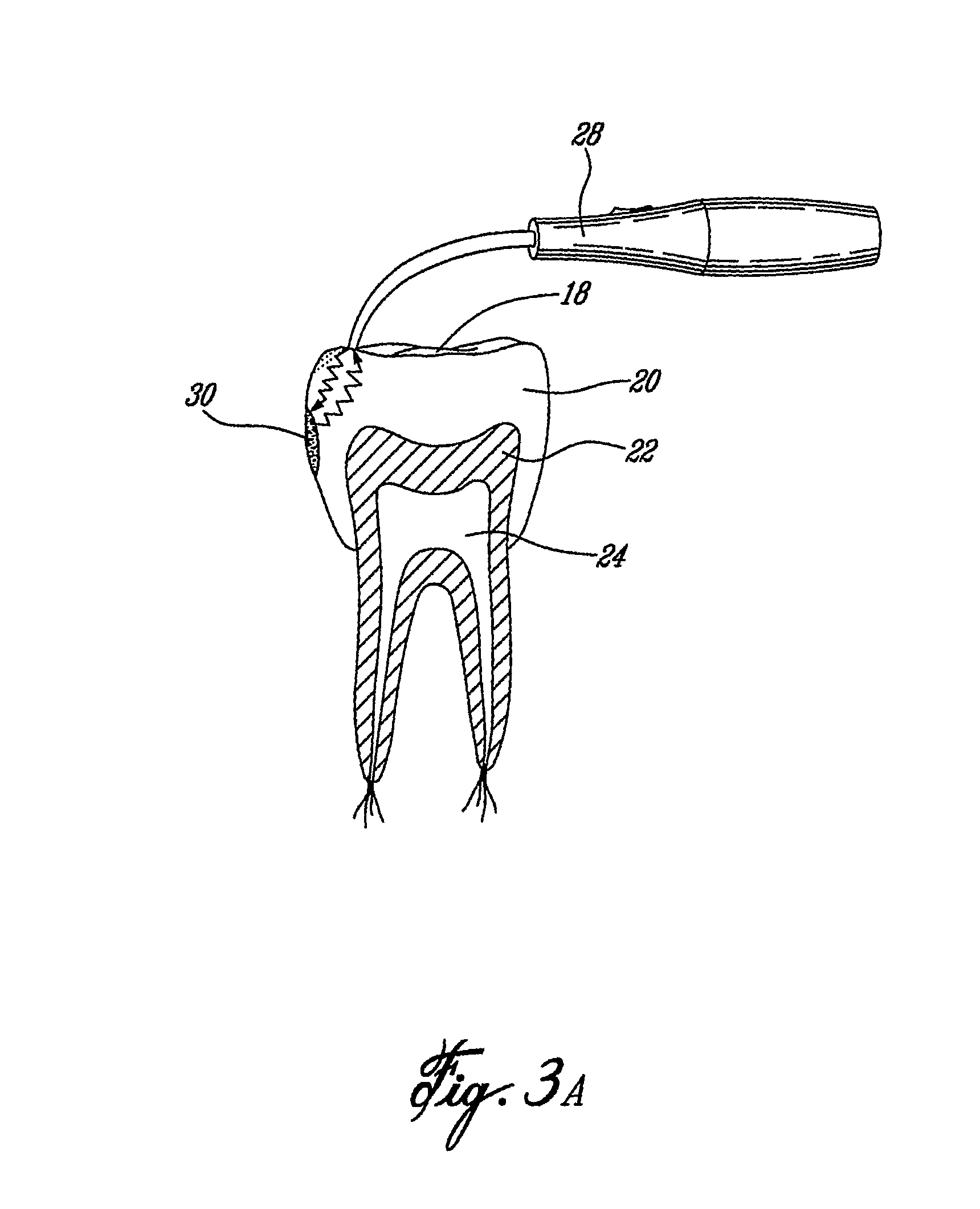Interproximal tooth defects detection
a technology of interproximal tooth and defect detection, applied in the field of optical detection of tooth defects, can solve the problems of inability to reliably detect dental caries, inability to use methods and instruments, and inability to use x-rays to investigate the structure of teeth
- Summary
- Abstract
- Description
- Claims
- Application Information
AI Technical Summary
Benefits of technology
Problems solved by technology
Method used
Image
Examples
Embodiment Construction
[0021]In the present description the term “defect” or “tooth defect” is used to refer to alterations in the tooth structure or physiology such as caries (demineralization), plaque, dental concretion (e.g.calculus), fracture in tooth structure, blood in gingival or bone, tartar and the like.
[0022]A schematic representation of teeth with reference to their anatomy is shown in FIG. 1. The surfaces of the teeth comprise the facial 10, lingual 12, mesial 14 and distal 16 surfaces. The facial surface of a tooth faces the cheeks or lips. The lingual surface faces toward the tongue. There are two proximal surfaces: The mesial surface is the proximal surface closest to the front of the mouth and the distal surface is the proximal surface opposite the mesial surface (towards the back of the mouth). Between the mesial surface of one tooth and the distal surface of the next tooth is the interproximal space. The top of the tooth comprises the occlusal surface 18 (for the bicuspids and molars). A...
PUM
 Login to View More
Login to View More Abstract
Description
Claims
Application Information
 Login to View More
Login to View More - R&D
- Intellectual Property
- Life Sciences
- Materials
- Tech Scout
- Unparalleled Data Quality
- Higher Quality Content
- 60% Fewer Hallucinations
Browse by: Latest US Patents, China's latest patents, Technical Efficacy Thesaurus, Application Domain, Technology Topic, Popular Technical Reports.
© 2025 PatSnap. All rights reserved.Legal|Privacy policy|Modern Slavery Act Transparency Statement|Sitemap|About US| Contact US: help@patsnap.com



